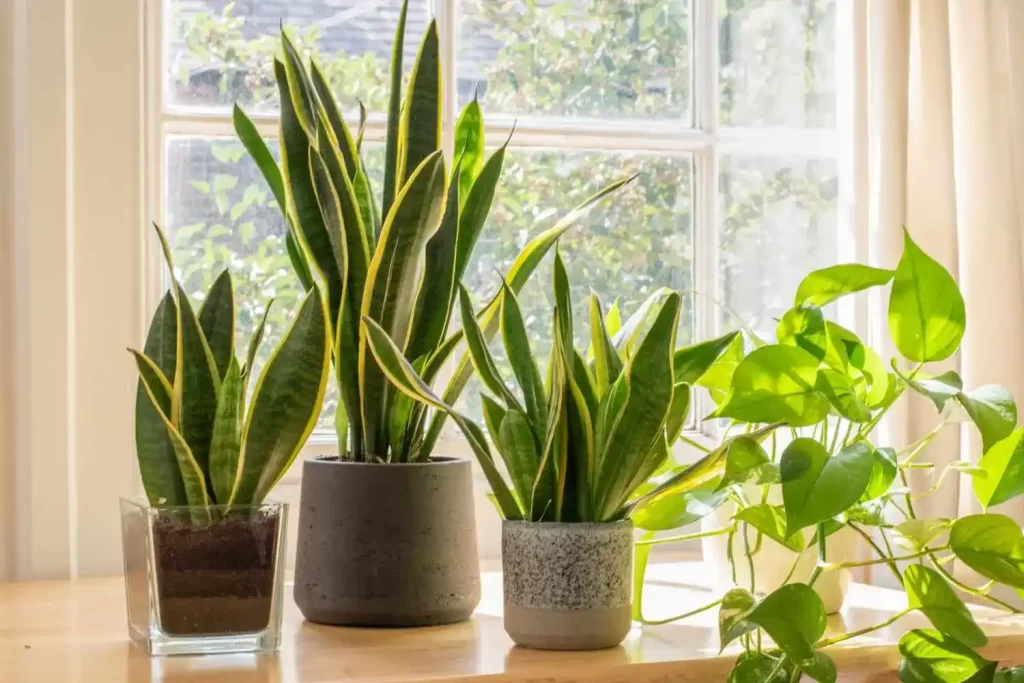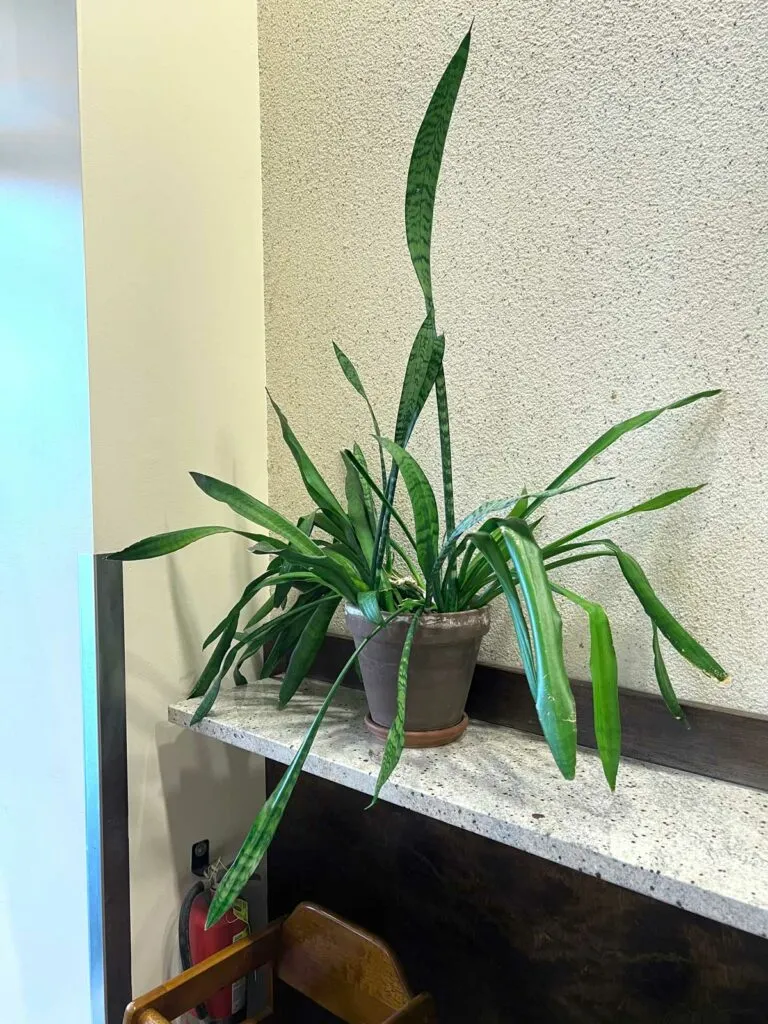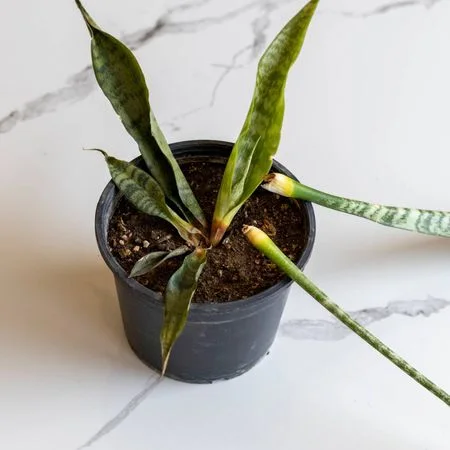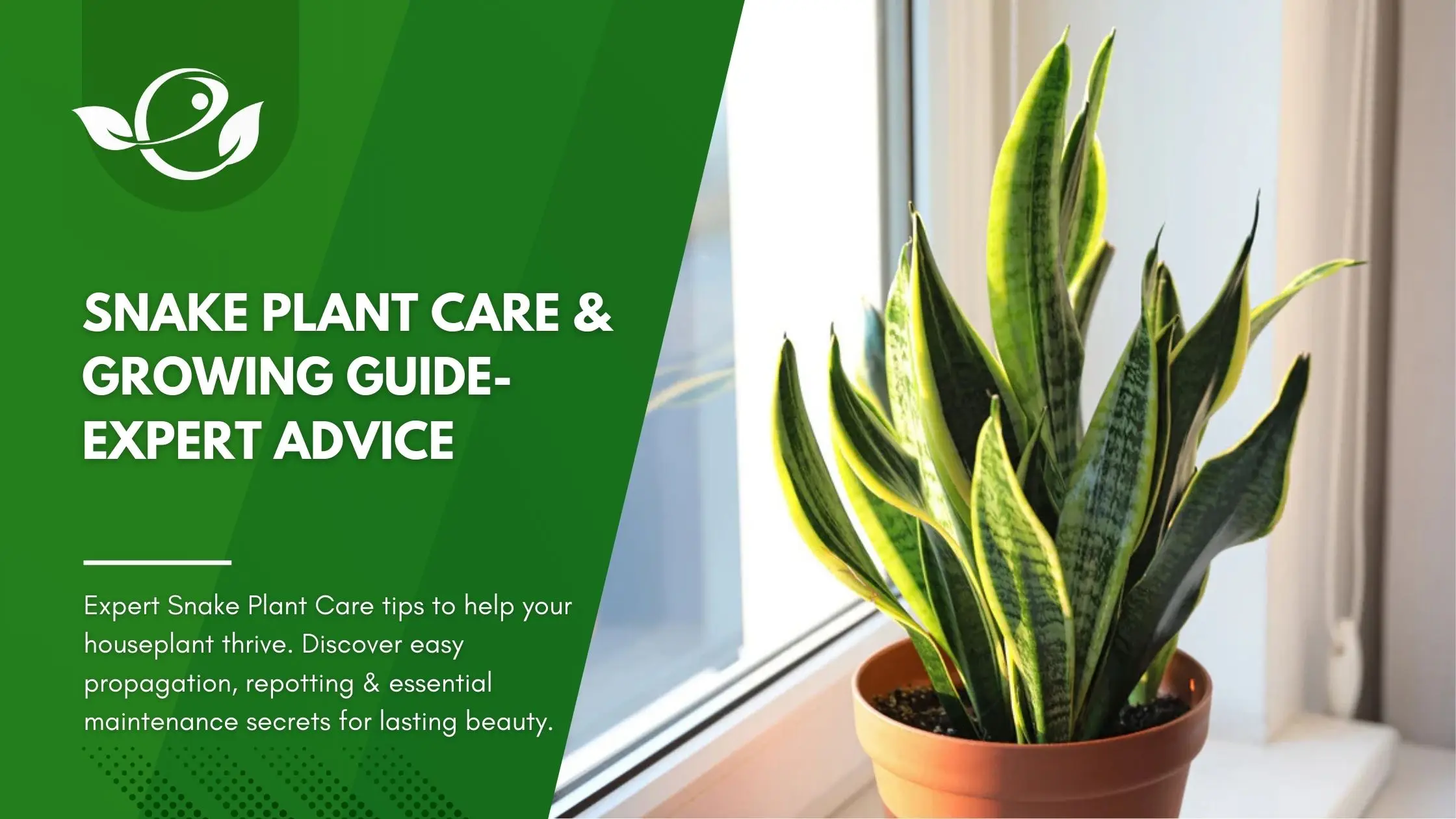Table of Contents
Looking for a plant that’s almost impossible to kill, thrives in neglect, and still manages to purify your air while looking stylish? Meet the snake plant—the ultimate low-maintenance houseplant with maximum rewards. Whether you’re a seasoned plant parent or a newbie with a “black thumb,” this sculptural green warrior is here to upgrade your space and energy.
But there’s more to the snake plant than meets the eye. From choosing the right variety to mastering its care, lighting, and watering needs, this comprehensive guide gives you expert-level advice to keep your plant thriving year-round. Let’s dig into the world of snake plant care, where effortless beauty meets botanical resilience.
Understanding Your Snake Plant
Snake Plant

The Snake Plant, scientifically known as Dracaena trifasciata, is a perennial succulent native to tropical West Africa. Its stiff, sword-like leaves, which often display beautiful variegation, have earned it popular names such as “mother-in-law’s tongue” and “Saint George’s sword.” Unlike many other houseplants, the Snake Plant utilizes crassulacean acid metabolism (CAM), opening its stomata at night to reduce water loss—a key adaptation that allows it to endure prolonged periods of drought.
| Attribute | Details |
|---|---|
| Common Name | Snake Plant, Mother-in-Law’s Tongue, Saint George’s Sword |
| Botanical Name | Dracaena trifasciata (formerly Sansevieria trifasciata) |
| Plant Type | Evergreen, Perennial, Succulent |
| Mature Size | 6 inches to 4 feet tall (depending on variety) |
| Sun Exposure | Bright indirect light to low light (tolerant of low light) |
| Soil Type | Well-draining, sandy or cactus mix |
| Soil pH | Slightly acidic to neutral (6.0–7.0) |
| Hardiness Zones | USDA Zones 9–11 (can be grown indoors anywhere) |
| Toxicity | Mildly toxic to pets and humans if ingested |
| Native Region | West Africa (Nigeria to Congo) |
| Watering Needs | Low—allow soil to dry completely between waterings |
| Growth Rate | Slow to moderate |
| Air Purifying | Yes—filters toxins like formaldehyde and benzene |
Popular Snake Plant Varieties
Dracaena trifasciata ‘Laurentii’: Perhaps the most recognizable variety, ‘Laurentii’ features upright, dark green leaves edged with bold, yellow stripes. This striking contrast makes it a favorite for adding visual interest to any room.
Dracaena trifasciata ‘Hahnii’: Known as the “bird’s nest” snake plant, ‘Hahnii’ is a compact cultivar that forms rosettes of short, broad leaves. Its smaller stature makes it perfect for tabletops or small spaces.
Dracaena trifasciata ‘Bantel’s Sensation’: This variety is celebrated for its variegated leaves that mix dark green with light, almost silvery-green patterns. Its more subtle coloration offers a refined, elegant aesthetic.
Dracaena trifasciata ‘Golden Hahnii’: Combining the compact form of ‘Hahnii’ with the vibrant, golden edging seen in ‘Laurentii’, this cultivar delivers both visual appeal and versatility.

Essential Snake Plant Care
Light: Maximizing Growth and Color
- Bright, Indirect Light: Snake Plants prefer an environment where light is abundant but diffused. East- or north-facing windows typically provide the ideal conditions without the harsh intensity of direct sunlight.
- Variegated Varieties: These cultivars rely on sufficient light to maintain their striking yellow or silver accents. In low-light conditions, they may revert to a more uniform green appearance, so placing them near a light source is crucial.
- Avoid Direct Sun: Direct, unfiltered sunlight can cause the leaf edges to scorch, leading to brown tips or faded variegation.
- Consider supplementing with artificial grow lights if natural light is scarce, especially during the winter months.
Water: Striking the Perfect Balance
- Drought-Tolerant Nature: As a succulent, the Snake Plant stores water in its leaves. Water only when the top inch of soil is completely dry. This can range from every 2 to 6 weeks, depending on indoor temperature and humidity levels.
- In warmer, active growing periods (spring and summer), you may need to water a bit more frequently.
- During the winter, watering is reduced significantly since the plant’s metabolic rate drops.
- Under-Watering: Leaves may become wrinkled or appear slightly shriveled.
- Overwatering: Yellowing or soft, mushy leaves are key signs that the plant is receiving too much moisture. Adjust your watering schedule accordingly.
Soil & Potting: The Foundation for Healthy Growth
- Well-Draining Mix: Use a soil mix designed for succulents or cacti. These mixes contain a high proportion of sand or perlite, which allows excess water to flow through quickly.
- Drainage is Key: Select a pot with ample drainage holes to prevent water from accumulating at the bottom.
- Material Matters: Clay or terracotta pots are excellent choices because they wick away moisture naturally. These materials help maintain a drier environment, which is preferable for a drought-tolerant plant.
Fertilization Strategies
Snake Plants are accustomed to nutrient-poor soils in their native habitats, making them relatively low-maintenance regarding fertilization. However, appropriate feeding during the growing season can enhance their health and appearance. A balanced fertilizer with an N-P-K ratio around 10-10-10 or 10-15-10 is suitable for Snake Plants. This balance supports overall growth, root development, and cellular functions. For instance, products like Schultz 10-15-10 Plant Food Fertilizer have been effectively used by enthusiasts.
- Application Frequency and Timing
- Growing Season: During spring and summer, apply a balanced liquid fertilizer diluted to half strength once a month. This supports active growth without overwhelming the plant.
- Dormant Period: Refrain from fertilizing in fall and winter when the plant’s growth slows. Feeding during dormancy can lead to nutrient buildup and potential root damage.
Temperature Requirements
Maintaining appropriate temperatures is vital for the health of Snake Plants. They prefer a consistent, warm environment. Snake Plants thrive in temperatures between 60°F to 80°F (15°C to 27°C). This range aligns with most indoor settings, making them suitable for homes and offices. While they can endure temperatures as low as 50°F (10°C), prolonged exposure to cold can be detrimental. It’s crucial to keep them away from drafts and sudden temperature changes.
Humidity Considerations
Snake Plants are adaptable to various humidity levels but have preferences that promote optimal growth. A relative humidity between 40% to 60% is ideal. This range supports healthy transpiration and overall vigor. They can tolerate lower humidity levels typical of indoor environments without significant issues. In arid regions, consider using a humidifier to maintain adequate moisture levels, benefiting both the plant and indoor air quality.
Repotting a Snake Plant: Expert Insights
When and Why to Repot a Snake Plant?
Unlike fast-growing tropical plants, Snake Plants grow slowly and prefer to be slightly root-bound. However, there are key signs that indicate it’s time to repot:
- Roots are circling or poking out of the drainage holes.
- Soil dries out too quickly, signaling that roots have filled the pot.
- The plant looks top-heavy or tips over easily.
- Stunted growth, despite optimal light and watering conditions.
Typically, repotting is needed every 2 to 3 years. The best time to repot is during the spring or early summer, when the plant is in its active growing phase and can recover faster from transplant shock.
Choosing the Right Pot
- Size: Select a pot that is only 1–2 inches wider than the current one. Too large a pot can lead to excess soil moisture and root rot.
- Material: Terra cotta pots are ideal as they’re breathable and help prevent waterlogging.
- Drainage: Always ensure the pot has good drainage holes—a non-negotiable for Snake Plants.
Best Soil Mix
Use a well-aerated, fast-draining mix such as:
- 2 parts cactus/succulent soil
- 1 part perlite or coarse sand
- Optional: a handful of orchid bark or pumice for added drainage
Avoid heavy or moisture-retentive soils, which increase the risk of fungal infections.
Step-by-Step Repotting Process
- Loosen the Plant: Gently remove the plant from its pot by tipping it sideways and easing the root ball out.
- Inspect Roots: Trim away any mushy, blackened, or rotted roots with sterilized scissors.
- Refresh the Soil: Remove old soil, especially if it’s compacted or harboring pests.
- Replant: Position the plant in the new pot and fill in with fresh soil mix around the roots, pressing lightly to anchor it.
- Wait to Water: Hold off on watering for 3–5 days to allow any disturbed roots to heal and avoid rot.
Propagation Techniques: Multiply with Confidence
Snake Plants are highly propagatable, offering multiple methods to create new plants. Each method has its advantages depending on your goals, time, and patience level.
1. Division (Best for Large, Mature Plants)
Division is the most straightforward and reliable way to propagate:
- Step 1: Gently remove the plant from its pot and separate the root ball into sections using a sharp knife or by hand.
- Step 2: Ensure each section has at least 1–2 healthy leaves and a portion of the rhizome (underground stem).
- Step 3: Pot each section individually in a fresh soil mix.
This method produces mature plants more quickly than other methods and is ideal when repotting a crowded or overgrown plant.
2. Leaf Cuttings in Soil
An easy and rewarding method that’s great for propagation enthusiasts:
- Step 1: Cut a healthy leaf near the base and divide it into 3–4 inch segments.
- Step 2: Let cuttings dry for 1–2 days to form a callus and prevent rot.
- Step 3: Plant the base end (mark it!) into moist cactus mix, about 1 inch deep.
- Step 4: Keep in a bright, indirect location and mist sparingly until roots form (4–6 weeks).
Note: Leaf cuttings of variegated varieties (e.g., ‘Laurentii’) often revert to green, losing their striping. Division is recommended to retain variegation.
3. Leaf Cuttings in Water
For those who like to monitor root development:
- Step 1: Place a leaf cutting in a glass of clean water, base-side down.
- Step 2: Change water every 5–7 days to prevent stagnation.
- Step 3: Once roots are about 1–2 inches long, transfer to soil.
This method is slower than others but is visually rewarding and educational—great for kids or new plant owners.
🧪 Bonus Tip: Stimulate Growth with Rooting Hormone
When propagating by cuttings, dip the cut end in rooting hormone powder before planting. This can accelerate root formation and increase success rates—especially in cooler months or low-light environments.
Common Pests & Diseases of Snake Plants
Even though Snake Plants are hardy and resistant to most common issues, they’re not entirely immune. Recognizing the early signs of pests and diseases can help you act fast and preserve your plant’s health.
| Pest/Disease | Common Cause | Signs to Look For |
|---|---|---|
| Mealybugs | Overwatering, poor air circulation, or bringing home infested plants | White cottony clusters on leaf joints or undersides; sticky residue (honeydew) |
| Spider Mites | Dry indoor air, especially during winter; lack of humidity | Fine webbing between leaves; tiny yellow speckling or faded leaves |
| Powdery Mildew | Bad airflow; excessive humidity | White, powdery substance on leaves; distorted or discolored leaves. |
| Fungus Gnats | Constantly moist soil or poor drainage | Tiny flying insects near soil; larvae in soil damaging roots |
| Thrips | Entry of bacteria through cuts, overwatering or high humidity | Silvery streaks or blotches on leaves, Leaf curling, Stunted growth |
| Scale Insects | Infestation spread from nearby infected plants | Hard, brown or black dome-shaped bumps on stems or leaves |
| Root Rot (Fungal) | Overwatering, poor drainage, using non-porous pots | Mushy, blackened roots; yellow, wilted, or collapsing leaves |
| Leaf Spot (Fungal) | High humidity and water sitting on leaves for extended periods | Dark or reddish-brown spots with yellow halos on leaves |
| Southern Blight | Contaminated soil; warm, humid conditions | White fungal threads (mycelium) at soil level; sudden wilting and yellowing |
| Bacterial Soft Rot | Overwatering, poor drainage, and using non-porous pots | Wet, mushy patches on leaves; foul odor; leaves collapse from base |
Troubleshooting Common Issues With Snake Plant
While Snake Plants are renowned for their hardiness, even the toughest indoor plants can experience occasional issues. Most problems are caused by overwatering, which can lead to fungal infections and root rot. Being able to diagnose and treat problems early ensures your plant stays healthy and attractive. Let’s explore the most common problems, their causes, and solutions:
1. Foul-Smelling Soil
A sour, rotten smell coming from the potting mix often indicates anaerobic conditions due to excess moisture and poor drainage. Overwatering is the primary culprit. When the roots are left sitting in saturated soil, they create a breeding ground for harmful bacteria and fungi, resulting in root rot.
Solution: Remove the plant from its pot and inspect the roots. Trim away any black, mushy, or rotten parts. Repot in a fresh, well-draining soil mix (ideally cactus or succulent soil). Use a container with drainage holes and never let the plant sit in standing water. Moving forward, water only when the top 1–2 inches of soil are dry.
2. Yellow or Brown Leaves
Discoloration of the foliage, particularly yellowing or browning at the tips or margins.
- Possible Causes:
- Overwatering: Yellow, mushy leaves usually signal root rot from excess moisture.
- Underwatering: Dry, crispy, brown leaf tips may result from prolonged drought.
- Cold Drafts or Temperature Swings: Sudden exposure to cold air or fluctuating indoor temperatures can also cause leaf damage.
- Excess Fertilizer: High salt buildup from over-fertilizing can burn the roots, leading to brown edges.

Solution: Adjust your watering schedule based on season and environment. Keep the plant away from heaters, air conditioners, and drafty windows. Flush the soil with water occasionally to remove fertilizer salts (only if the drainage is excellent). Remove damaged leaves if more than 50% is discolored—they won’t recover and can attract pests.
3. Curling Leaves
Problem: Snake Plant leaves may curl inward or appear twisted.
- Cause:
- Inconsistent Watering: Irregular watering patterns can stress the plant, causing leaf curling.
- Pest Infestations: Spider mites and thrips suck the sap from leaves, causing distortion.
- Underwatering: Curling is a drought-response mechanism to conserve moisture.
- Sudden Temperature Drops: Rapid exposure to cold can shock the plant, especially near drafty doors/windows.

Solution: Stick to a consistent watering routine—wait until the soil is dry before watering again. Inspect both sides of the leaves using a magnifying glass to detect pests. Treat infestations with neem oil or insecticidal soap. Maintain room temperature between 60°F and 85°F (15°C–29°C). Avoid relocating your Snake Plant frequently or placing it in fluctuating environments.
4. Leaves Falling Over or Drooping
Problem: Upright leaves begin to droop, fall sideways, or collapse.
- Causes:
- Root Rot: A soggy root system can no longer support the stiff leaf structure.
- Lack of Light: Insufficient light can weaken leaves, making them lean or topple.
- Overgrown Plant: Older or very large plants might naturally droop due to weight.

Solution: Check for root health. If roots are black and mushy, treat root rot and repot. Move the plant to a brighter location with indirect light—avoid intense midday sun. Stake or prune overly tall leaves to maintain symmetry and balance.
Benefits of Snake Plants
Snake plants are more than just aesthetically pleasing additions to your home or office. These hardy succulents offer a host of functional benefits that make them one of the most valuable indoor plants for modern living. Below is a comprehensive look at the key advantages of owning a Snake Plant.
- Air Purification: One of the standout benefits of snake plants is their ability to purify indoor air. NASA’s Clean Air Study identified Dracaena trifasciata (formerly Sansevieria) as one of the few plants that can filter harmful toxins.
- Oxygen Production: Unlike many plants, Snake Plants perform photosynthesis using the Crassulacean Acid Metabolism (CAM) process. This means they convert CO₂ into oxygen during the night, making them excellent choices for bedrooms—supporting improved sleep and overnight air quality.
- Low Maintenance and Drought Tolerance: Their thick, fleshy leaves store water efficiently, allowing them to survive long periods without being watered.
- Aesthetic Versatility in Interior Design: The Snake Plant’s tall, upright leaves with bold patterns and clean lines make it a natural complement to modern, minimalist, boho, or Scandinavian design aesthetics.
- Mental Health & Productivity Benefits: Studies have shown that being around greenery and living plants can significantly improve concentration, reduce stress, and boost productivity.
- Safe CO₂ Absorption: Unlike many plants that release carbon dioxide at night, Snake Plants do the opposite—they absorb CO₂ and continue producing oxygen during nighttime hours.
FAQs on Snake Plant Care
How often should I water my Snake Plant?
Water every 2-6 weeks, depending on the season and indoor humidity. Ensure the top inch of soil is completely dry before watering again.
What is the best location for my Snake Plant?
Place your Snake Plant in an area that receives bright, indirect light. North or east-facing windows are ideal for maintaining consistent growth without risking sunburn.
Can my Snake Plant help improve indoor air quality?
Yes, Snake Plants are known for their ability to filter toxins from the air, making them an excellent choice for enhancing indoor air quality.
Is the snake plant lucky or unlucky?
Great question! The snake plant, also known as Dracaena trifasciata or mother-in-law’s tongue, is widely regarded as a lucky plant in many cultures—especially when placed correctly according to Feng Shui or Vastu principles.
Final Thoughts
Simple. Stylish. Seriously Resilient.
With its striking vertical leaves, near-bulletproof resilience, and air-purifying superpowers, the snake plant is a top-tier choice for anyone wanting to green up their space without the stress. Whether it’s brightening a living room, revitalizing a bedroom, or sitting proudly on an office desk, this plant proves that you don’t need to be a horticulturist to grow something amazing.
By following the expert care tips in this guide, you’re not just growing a plant—you’re cultivating cleaner air, better energy, and a space that feels more alive. So go ahead, give your snake plant the attention it deserves—and it’ll return the favor in spades.








